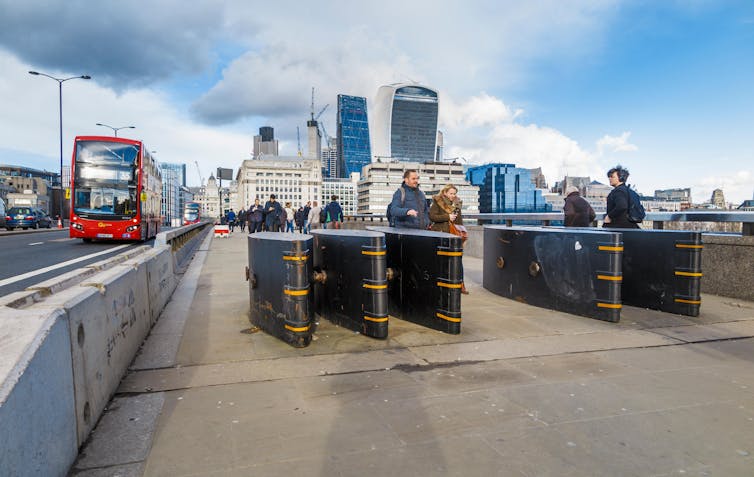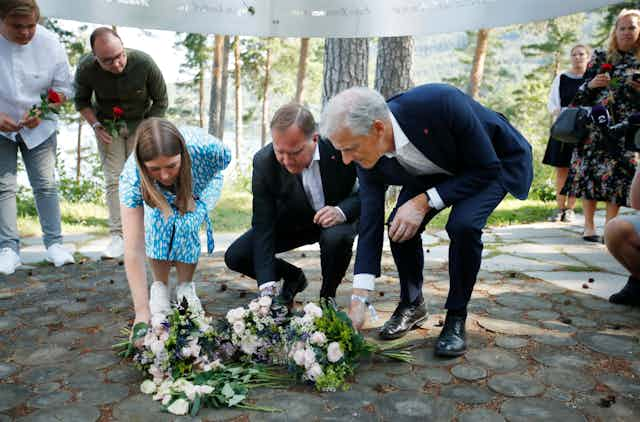It has been 10 years since 77 people – mostly teenage political activists – were massacred in a far-right terror attack in Norway that shocked the country and the world.
Anders Breivik was 32 years old on July 22 2011 when he detonated an ammonium nitrate fertiliser bomb at 15:25pm in the Regjeringskvartalet district of Oslo, attempting to assassinate government officials, killing eight. Ninety minutes later, as emergency services responded to the bomb, Breivik, posing as a police officer, arrived at Utøya Island, the site of a youth Labour Party summer youth camp.
Using legally acquired weapons, he murdered 69 members of the Workers’ Youth League summer camp. Hoping to target former Norwegian prime minister Gro Harlem Brundtland, whose appearance at the island that day was cancelled, he fired indiscriminately at adults and teens alike.
Norway, with strict gun controls, had only ever witnessed one mass shooting, at a shooting range in Farsund, in August 1988. Four people were killed with a shotgun and two were injured by a shooter with severe psychosis.
Breivik’s attack was labelled terrorism, joining only two other terrorist attacks in the country since the second world war (the 1977 bombing of a left-wing bookshop, and a bomb thrown into a peaceful demonstration in 1979).
Breivik’s attack differed from the horrors of other headline-making mass shootings in that his shots were not “random carnage”, but targeted at fledgling political figures of the future. His use of the bomb as a distraction to aid his main attack was even more impactful – one in four Norwegians knew someone personally affected by the massacre.
Mass shootings, 10 years later
Ten years on from Brevik’s attack, mass shootings are still rare in Europe, occurring mostly in countries with relatively relaxed firearm regulations, such as Germany and Finland.
In the US, there is a different story. In 2020, the country saw the largest number of mass shootings in any year in its history (610 incidents where 4 or more were injured or killed irrespective of motive).
Strict firearm laws in other countries have generally helped to stop mass shootings, for example in Australia and the UK. However, those intent on causing mass carnage who are unable to access firearms have shown increasing use of vehicles as weapons, including attacks in Sweden, Germany, France, Spain and in the UK.
It is much easier to access vehicles than guns in many countries, and drivers can get unobtrusively close to potential victims. In response, the geography of public spaces in many major cities around Europe have been physically changed by bollards and barriers as a way to keep citizens safe from vehicle attacks.
This raises important questions about the price to be paid for civilian safety, and how we want our public spaces to look and feel.

FBI director Christopher Wray acknowledged that surveillance is limited in preventing mass shootings or terrorist actions, and suggests “people-power” is the greatest ally, stating that all citizens have a critical role in prevention by overcoming a natural reluctance to report suspicious activity to authorities.
Brevik’s actions led to copycat attacks in the Czech Republic and Poland in 2012 and the New Zealand Mosque attacks in 2019.
Due to the contagious nature of mass shootings and the large amount of global media attention they receive, it is likely that this will continue to happen for years.
What has changed
A positive element of Breivik’s legacy is that Norway, which already prohibits civilians from owning automatic weapons, announced plans in 2018 to ban semi-automatic gun ownership by 2021 (except for hunting and sport). Although the ban is yet to be enacted, there are over 40 different semi-automatic weapons slated to be largely outlawed. The ban would require current owners of semi-automatic weapons to surrender them to the authorities, and would prohibit future sales.
While Breivik believed that direct action was required over democracy, studies have shown that Norwegian youth are now more determined to use democracy than ever, with 67% of Norwegians aged 18-21 casting a ballot in 2013 elections, an increase of 10% from 2009.
Breivik was what researchers have called a “fame-seeking mass shooter” – he chose to be captured, and distributed photos and a manifesto to enhance his notoriety.
Court-ordered psychological assessment ultimately concluded that Breivik’s acts were the result of grandiose, delusional narcissism – his views were “extreme overvalued beliefs,” not delusions.
He wanted his audience to view him as a “freedom figher” acting against an imagined Islamist threat, when in reality he was a hate-filled fantasist who lacked any meaningful social connections or occupation. Like many similar perpetrators, he turned to mass shooting at a difficult and lonely point in his life.
Breivik was sentenced to preventative detention for 21 years in prison, the maximum sentence allowed by Norwegian law. This can be repeatedly extended by five years if needed. He may only be eligible for release if he is deemed rehabilitated. However, reports of his continuously disruptive and litigious behaviour make it unlikely he will be released anytime soon.
Ten years after the attacks, Norway’s strict gun laws are set to become more so, with fewer dangerous people accessing firearms. The youth of “generation Utøya” are more committed to political debate and less tolerant of violence, and better public understanding of the facts around mental illness and violence was a consequence of Breivik’s highly publicised trial.
Despite Breivik’s atrocity, he inadvertently made a civilised country even more so. Should he ever be released from prison, he may find himself in a Norway he no longer recognises.

